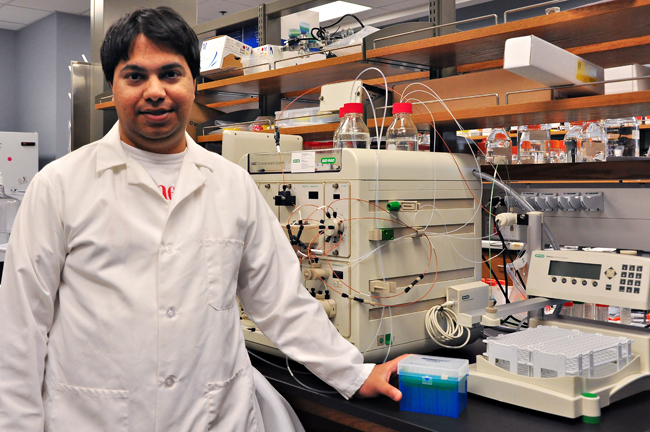A University research team led by Somshuvra Mukhopadhyay, pharmacology and toxicology assistant professor, discovered that an increase in Parkinson’s disease and other parkinsonian disorders can be linked to a gene mutation.
The mutation occurs in gene SLC30A10, which helps regulate the amount of manganese in the body’s cells. The team’s study of European families with a history of hereditary parkinsonism led to the finding.
“They had high levels of the metal manganese in their blood,” Mukhopadhyay said. “This suggested that the gene was required to regulate manganese levels.”
The reasearch team also determined that the gene codes for a protein that removes excess manganese from cells.
“It releases the amount of manganese within the cell,” Mukhopadhyay said.
The gene mutation prevents the protein from removing manganese from the cell, and it increases the amount of manganese in the blood as a result.
“The gene blocked the transport of the protein, blocking the ability of the cells to transport manganese,” Mukhopadhyay said.
He also said people who have been exposed to manganese through working in the steel industry have shown a higher level of manganese in their blood.
“People who live in areas where there’s steel have a higher susceptibility to [manganese],” Mukhopadhyay said.
Mukhopadhyay said the understanding of the gene’s function has implications for the development of drugs to treat people with the mutation.
“There’s the potential to [make] drugs that can improve gene activity,” Mukhopadhyay said.
Although steel workers have high exposure to manganese, Mukhopadhyay said people consume manganese through eating foods such as fish and certain vegetables.
“We get manganese from the diet,” Mukhopadhyay said.
Usually, this is not a problem, but those with the genetic mutation could accumulate too much manganese in their cells, which could become toxic.
The high levels of manganese in other people, then, has indicated that they might have the mutated version of the gene.
Mukhopadhyay also said environmental factors could affect the function of the gene.
“In most cases, I do believe there’s a genetic factor and whole range of other factors involved,” Mukhopadhyay said.
The research team also included Michael Aschner, professor from the Albert Einstein College of Medicine, and Richard Morrisett, UT pharmacology and toxicology professor.
“Rich provided us with essential technical input on how to culture primary neurons, which was required to get this paper published,” Mukhopadhyay said in an email.





















